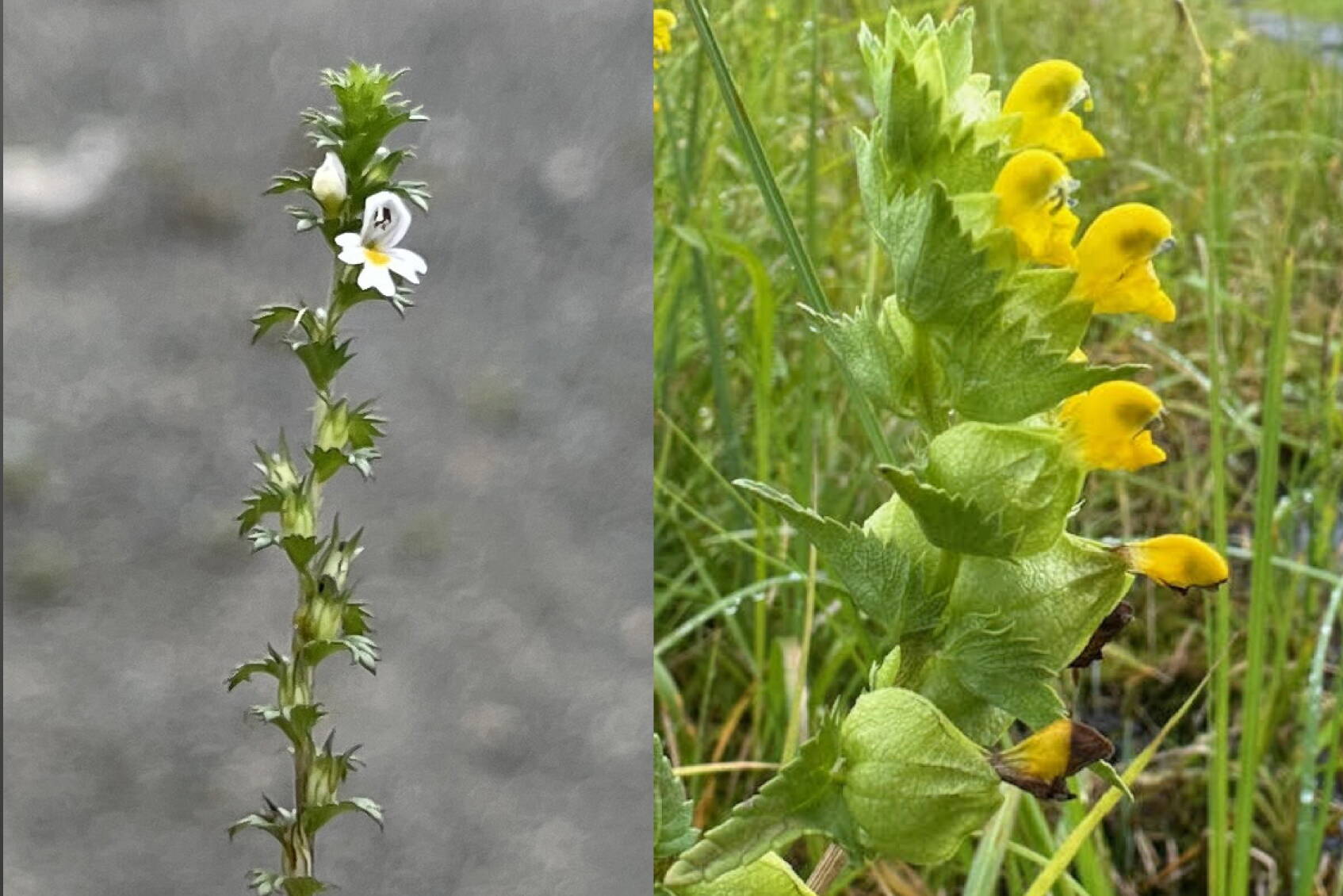In our region there are a few fully parasitic plants, totally dependent on other plants for carbon, water, and nutrients. Some of them are not common, but we sometimes see them along the trails.
They stand out in the background of greens because they have no green tissue; the stem and flowers of ghost pipe (formerly Indian pipe) are white; pinesap is pale yellowish/pinkish. Lacking chlorophyll, these plants cannot photosynthesize and make their own carbon-based compounds; they depend totally on others. They connect to the mycorrhizal fungal network that pervades the soils and connects so many green plants to each other and drain that network for carbon compounds to provide energy.
A more common full-time parasite is northern groundcone, a brownish plant that contains no chlorophyll, so it cannot photosynthesize. It parasitizes the roots of alders and sometimes other trees, connecting with them by means of a special transfer structure called a haustorium (from a Latin word for drain or suck). Haustoria connect to the hosts’ xylem tissue, which contains some organic compounds as well as water and nutrients.
Other species are called hemiparasites. They are often listed simply as parasites in field guides, but the real situation is more complex. They are green and capable of at least some photosynthesis but they also parasitize other plants, for carbon to some degree but especially for water and nutrients, using haustoria. As a parasite, they can be capable of reducing growth of the host by stealing its resources. The “balance of power” between host and parasite might be variable: perhaps the parasite can sometimes draw more resources, and maybe the host may be able to increase its resistance — an interesting question!
There are thousands of these species in the world. A few attack the host’s stem and depend on the host for almost everything. Dwarf mistletoe is an example of one that is almost entirely dependent on its host tree, although it may have a tiny bit of chlorophyll in its very small leaves. However, most hemiparasites use their haustoria to attack the roots of hosts and are dependent on the host (and thus indirectly to the mycorrhizal network) to varying degrees, and we have several of them. Most of them grow in open or semi-open habitats. Here are the ones I know about:
• Rhinanthus: one species here, known as yellow rattle for the color of the flower and the rattling of the seeds in dry capsules. The flower has a hooded upper lip and a three-lobed lower lip, giving it a shape that suggested to someone the name of nose-flower (rhin-anthus). The capsule is borne in a “balloon” composed of fused sepals. The seeds have wings, suggesting wind dispersal.
• Castilleja: three species here, called paintbrush. The inconspicuous flowers are greenish and tubular, concealed by colorful bracts. One species is yellow, one is red, and one is variable. The seeds are small, with no special adaptations for dispersal.
• Comandra (or Geocaulon): one species here, sometimes called bastard toadflax or northern comandra. Two to four flowers (said to be purplish-green) cluster in the leaf axils on a stem; one of those is both male and female (the others are male) and can produce orange, fleshy fruits. Animals are likely seed dispersers.
• Euphrasia: one or two native species here, and one non-native species, both called eyebright, perhaps for its uses as medicine. A small annual plant, it produces white flowers in the leaf axils; they bloom sequentially up the stem. The hooded upper lip of the flower has a dark spot and the lower lip has blue/purple lines; a yellow spot occurs toward the back of the open flower. The seeds have no special adaptation for dispersal and may not go far from the parent.
• Pedicularis: several species here, known as louseworts. The upper lip of the flower is usually hooded, sometimes beaked, and flower color varies among species from shades of purple to yellow. Flowers are typically borne in dense clusters at the top of the stem, but in one species they occur at intervals on the stem. Members of this genus seem to have various means of seed dispersal, but I have little information about our local species.
• Mary F. Willson is a retired professor of ecology. “On The Trails” appears every Wednesday in the Juneau Empire.

